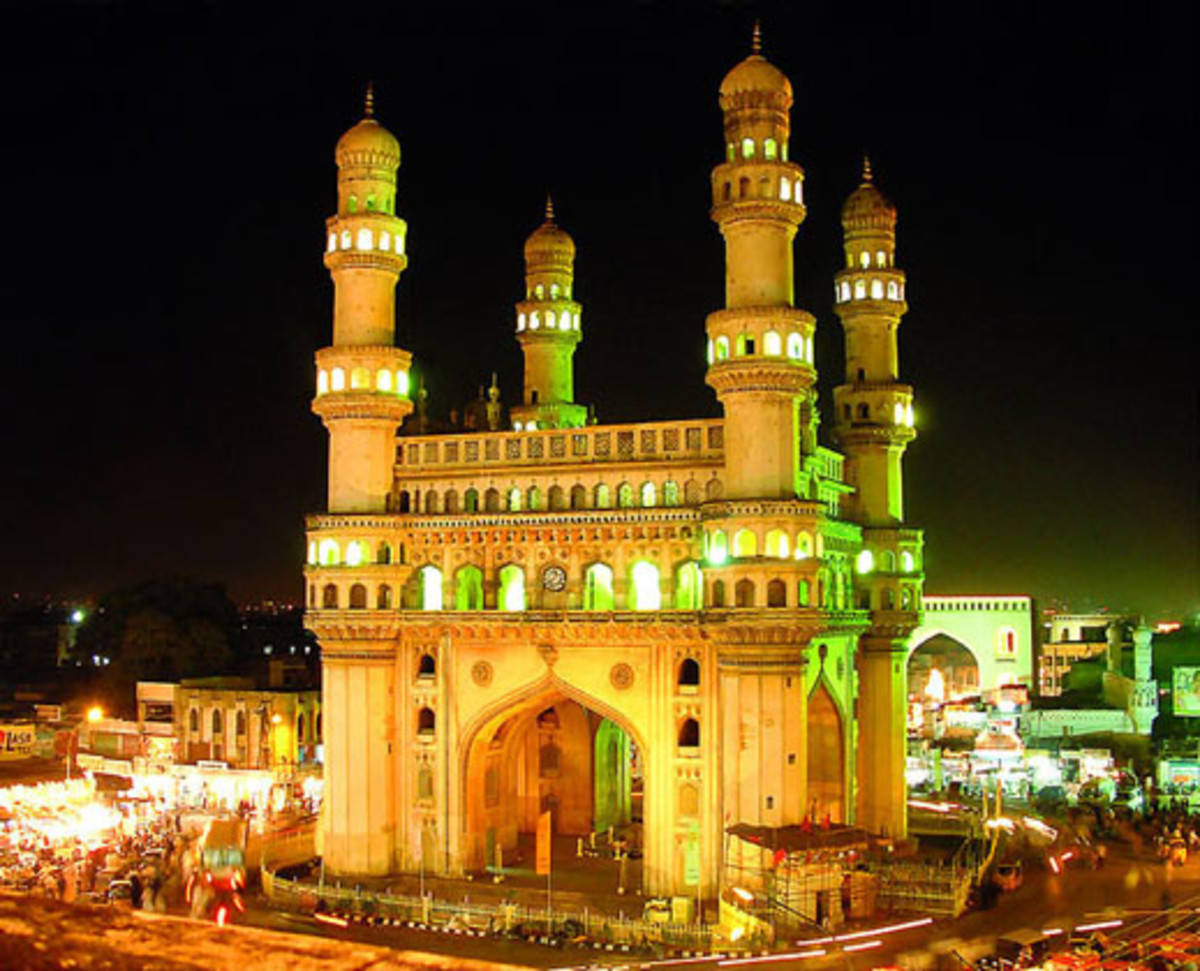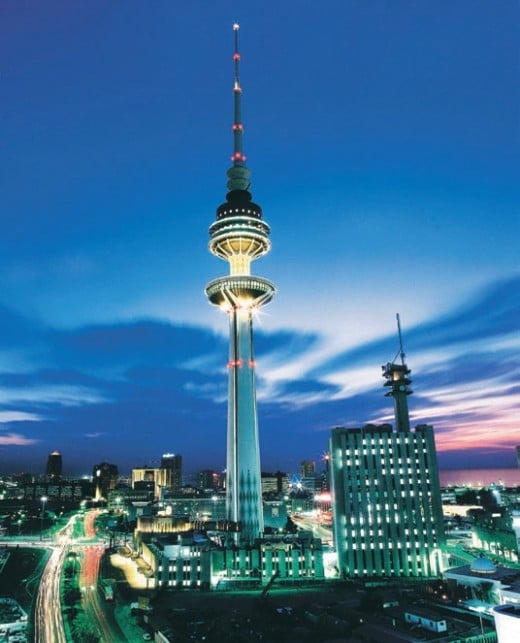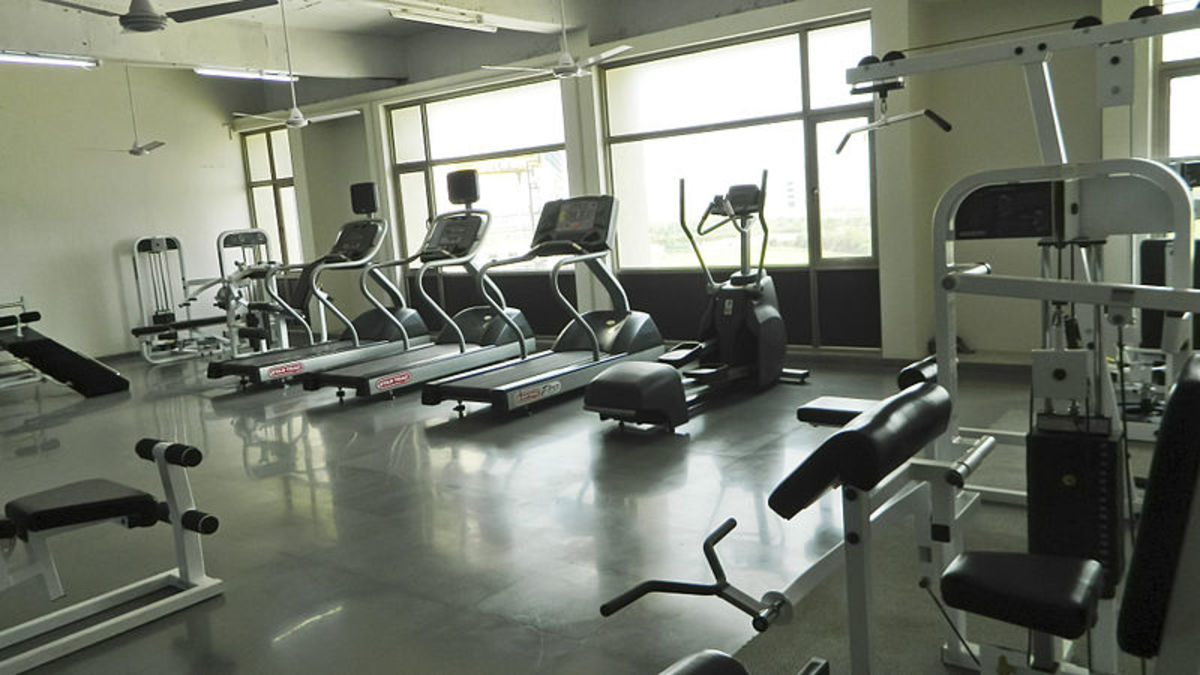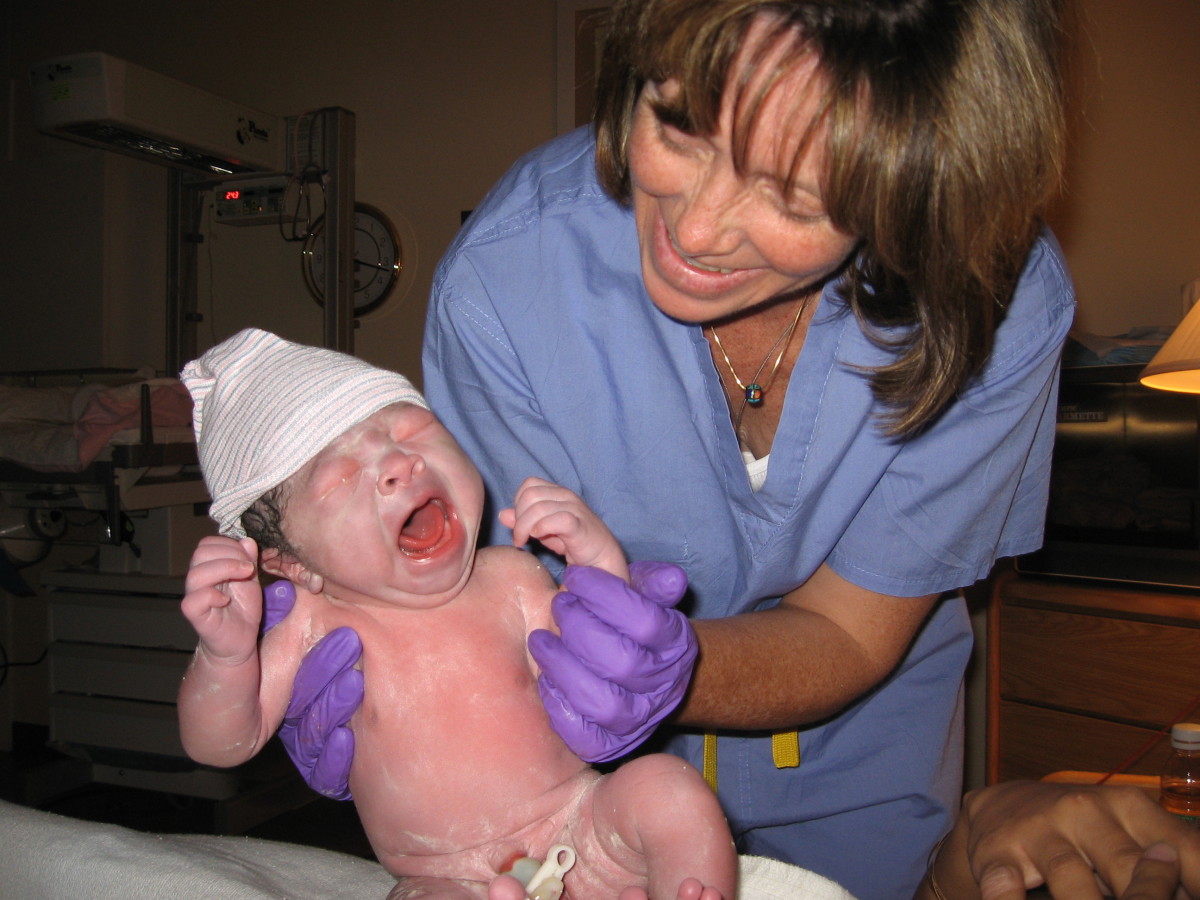Investing in India - Healthcare Sector Report
Healthcare Market of India
Hospital Market in India
Approximately US$34.9 billion or 5.2% of India’s gross domestic product was spent on healthcare in 2004. Healthcare spending in India is expected to rise by 12% per annum through 2005-09 and this figure is expected to reach 5.5%, or approximately US$60.9 billion, by 2012, according to IBEF-E&Y. CRISINFAC expects the total healthcare delivery market in India to grow from Rs. 1,253 billion in 2006 to Rs. 3,642 billion by 2016. According to the WHO, despite this increasing trend, India lags behind other developing nations in per capita total expenditure. In 2003, per capita total expenditure on healthcare was US$82 in India as compared to US$597 in Brazil and US$278 in China. The Indian healthcare industry also suffers from limited government spending. For example, in 2004, government spending on healthcare amounted to 24.8% of total healthcare expenditure in India, as compared to 45.3% in Brazil and 49.4% in South Korea, according to the WHO. Indian healthcare infrastructure and the number of healthcare professionals also compare poorly to other developing countries. According to CII-McKinsey, India had only 1.5 hospital beds per thousand people in
2001, while China, Brazil, Thailand and South Korea had an average of 4.3 beds per thousand people. Moreover, the number of allopathic physicians in India was only 0.60 per thousand in 2005 compared to 1.15 in Brazil, 1.06 in China and 1.57 in the Republic of Korea, according to the WHO. India also suffers from a shortage of nurses. There only 0.80 nurses per thousand people in India in 2005, according to the WHO, compared to 3.84 in Brazil, 1.05 in China, and 1.75 in the Republic of Korea. According to FICCI-E&Y, India is expected to have a shortage of 1.2 million nurses by 2012 assuming the target is a ratio of two nurses per doctor. This shortage is particularly severe in the intensive care segment, where the average nurse to bed ratio is only 1:1. The following table sets forth certain key healthcare indicators for India and certain other countries:
Increased Spending on Infrastructure
In order to meet the demand for healthcare in India and improve the availability of hospital beds and doctors, it is widely acknowledged that India’s infrastructure will need to be improved significantly. CRISINFAC believes that nearly Rs. 668 billion will be required by 2011 and Rs. 1,654 billion by 2016 for ramping up the healthcare infrastructure, of which only one-fifth is expected to come from the government. The remaining investments are expected to come from the private sector. CRIS-INFAC1 estimates that India needs an additional 632,000 beds by 2016, translating into Rs. 1,654 billion of investments. According to FICCI-EY, there were 1.2 million beds in India in 2006, of which 682,500 were in private healthcare facilities. According to CII-McKinsey, approximately 750,000 additional beds, including 150,000 tertiary care beds, will need to be added in India to meet increasing demand for inpatient services by 2012 and bring the hospital bed to population ratio to 1.9:1,000. CII-McKinsey also estimates that 20% of the additional beds will be required for specialty healthcare needs such as cancer and cardiac diseases.
According to CII-McKinsey, an additional 520,000 doctors will be required over and above the numbers that will be added through existing medical colleges by 2012 to reach a ratio of one medical doctor per thousand people in India. In order to maintain the current doctor/nurse ratio of 1:1.6, an additional 770,000 nurses will have to be trained over and above those who will be trained at current nursing schools by 2012.
According to CII-McKinsey, creating this infrastructure in India will require investments of approximately Rs. 1,000 billion to Rs. 1,400 billion by 2012 in secondary and tertiary care hospitals, medical colleges, nursing schools and hospital management schools. After taking into account the expected investment by government and other agencies during this period, almost 80% of this amount will need to come from the private sector.
The sector's growth will be driven by the country's growing middle class, which can afford quality healthcare. Over 150 million Indians have annual incomes of more than US$ 1,000, and many who work in the business services sector earn as much as US$ 20,000 a year. Today at least 50 million Indians can afford to buy Western medicines-a market only 20 per cent smaller than that of the UK.
The growing purchasing power of Indian patients is revealed in the increased business of air ambulance services. Around 365 airlifting’s worth several millions of rupees happen in Delhi in a year on average.
If the economy continues to grow faster than the economies of the developed world, and the literacy rate keeps rising, much of western and southern India will be middle class by 2020.
To meet this demand, the country needs US$ 50 billion annually for the next 20 years, says a CII study. India needs to add 2 million beds to the existing 1.1 million by 2027, and requires immediate investments of US$ 82 billion.
Funds in the sector have been largely private. In fact, it is believed that the private sector provides 60 per cent of all outpatient care in India and as much as 40 per cent of all in-patient care. It is estimated that nearly 70 per cent of all hospitals and 40 per cent of hospital beds in the country are in the private sector, says PWC.
Market Growth
Although many parts of India remain poor and access to basic healthcare remains the focus in those regions, according to CRIS-INFAC, socio-economic and demographic changes within certain segments of the Indian population, particularly in urban areas, have created increased demand for advanced healthcare services. The increasing affluence of the Indian population and increased awareness of healthcare options as a result of improved literacy and education is also likely to contribute to the increase in the demand for healthcare services. Not only is there a growing awareness and sophistication among healthcare consumers who are demanding more services, there is also an increase in the incidence of so-called “lifestyle” diseases like cancer, diabetes and cardiovascular disease, which are more expensive to treat than communicable and infectious diseases. Due to the increase in treatment of complex lifestyle diseases, which generally entail higher average expenditure per treatment, the growth in income levels of the urban middle class and the expansion of healthcare infrastructure and health insurance across India, CRIS-INFAC expects the total healthcare delivery market in India to grow from Rs. 1,253 billion in 2006 to Rs. 3,642 billion by 2016.
According to IBEF-E&Y, approximately US$60.9 billion, or 5.5% of India’s gross domestic product, is expected to be spent on healthcare by 2012, up from approximately US$34.9 billion, or 5.2%, in 2004. FICCI-E&Y expects the Indian healthcare industry to grow from US$34.2 billion in 2006 to US$78.6 billion in 2012. Private healthcare is expected by CII-McKinsey to continue to be the largest component of healthcare spending in 2012 and could increase to Rs. 1,560 billion by 2012 if health insurance coverage becomes more widely available to the upper and middle classes. Government spending is also expected to increase. CII-McKinsey expects public spending to double by 2012 from Rs. 170 billion in 2001 if the Government of India reaches its target spending level of 2% of the gross domestic product, up from 0.9% in 2001.
Structure of the Healthcare Delivery Industry
Healthcare facilities in India vary by the level and complexity of treatment offered, quality of infrastructure facilities and availability of qualified doctors and support staff. They can be divided into: Primary care facilities, which offer basic, point-of-contact medical services and healthcare prevention services in an outpatient setting. Primary care facilities are typically clinics with one or more general practitioners on site. CII-McKinsey estimates that the total spending in this market in India was approximately Rs. 370 billion in 2001.
Secondary care facilities offer both inpatient and outpatient medical services, including simple surgical procedures. Such facilities offer basic medical specialties including internal medicine, pediatrics, obstetrics and gynecology, and limited coverage of other specialties including gastroenterology, urology, dermatology, and cardiology. CII-McKinsey estimates that the total spending in this market in India was approximately Rs. 250 billion in 2001.
Tertiary care facilities offer highly specialized and sophisticated medical care and surgical procedures in a primarily inpatient setting. Such facilities offer treatment in specialty and “super-specialty” areas of cardiology, neurology, oncology, and orthopedics, among others. CRIS-INFAC estimates that expenditure on tertiary care hospitals comprised approximately 15-20% of the total Rs. 1,253 billion spend for healthcare delivery in India in 2006. According to CRIS-INFAC, this segment is expected to grow faster than the primary or secondary care segments because of an expected rise in complex lifestyle diseases like cardiovascular diseases, diabetes and cancer.
Quaternary care facilities, which offer similar services to tertiary care facilities with a focus on “super specialty” surgical procedures, including advanced cardiac, neurosurgical and joint-replacement surgeries. Healthcare facilities in India typically have both inpatient (IPD) and outpatient (OPD) departments. According to CRIS-INFAC, IPD facilities typically require more extensive capital expenditures for beds, operating theaters, intensive care units, nursing services, pharmaceutical services, laboratory and diagnostic centers and a central sterile supply department. OPD facilities, by contrast, require more basic facilities such as examination rooms and less complex operating rooms. OPDs are an important s ce of patients for a hospital’s diagnostic centers and IPD, referring an average of approximately 30% of outpatients in 2004 to the IPD.
Public vs. Private Provision of Healthcare Services
Although access to government run hospitals is widely available in both urban and rural areas in India, healthcare delivery infrastructure is typically not well-developed, and there is a strain on existing res ces. Patients may be required to wait in long queues for treatment at these hospitals, and many doctors are overworked. India’s growing middle class is, therefore, increasingly choosing private hospitals. Privately operated healthcare delivery accounted for over half of all inpatient hospital visits in India and 82% of all outpatient visits according to CRIS-INFAC’s report published in 2005. According to FICCI-EY, only 23.5% of urban residents and 30.6% of rural residents choose to visit a government health facility as their main s ce of healthcare services, despite the average cost being higher at US$4.3 (Rs. 193.50) for private healthcare compared to the average cost of US$2.7 (Rs. 121.50) at government-owned healthcare agencies. Private sector healthcare services range from those provided by large corporate hospitals and smaller hospitals or nursing homes to clinics/dispensaries run by qualified personnel and services provided by unlicensed practitioners. According to CII-McKinsey, a majority of the private facilities in India in 2001
small: approximately 84% had less than 30 beds and only 6% had more than 100 beds. The use of private facilities also tends to vary from state to state in India with a majority of patients in the states of Punjab, Haryana and Maharashtra going to private hospitals. In addition, although a significant share of healthcare services in India is delivered by the private sector rather than the public sector, the costs of such services tend to be higher. According to the Planning Commission (2002), the average cost of treatment per day for inpatients at a public healthcare facility was Rs. 24 in 2000, which is a fraction of the cost incurred at a private healthcare facility.
Profitability of Healthcare Industry
According to E&Y, the Indian healthcare industry suffers from low average EBITDA margins (17.7%) compared to the US healthcare industry or other sectors in India such as the hospitality industry. With domestic health insurance premiums growing, hospitals are likely to face a greater margin squeeze with increasing pressure from insurance companies for price rationalization and longer credit periods. E&Y also states that hospitals of medium size (141-220 beds) have the highest profitability, measured by revenue per occupied bed per day, compared to small size (80-140 beds) and large size (221-400 beds) hospitals, although the location of the hospital, city specific demand, target market and price sensitivity also determine profitability. According to E&Y, cardiac specialty hospitals generate the highest revenue per occupied bed per day (Rs. 13,413), followed by single-specialty hospitals (Rs. 11,141) and multi-specialty hospitals (Rs. 10,620). As for profitability, multi-specialty hospitals generate the highest EBITDA margins per occupied bed per day. According to the same report, the average length of stay at Indian tertiary care hospitals is approximately 5 days, which is higher than the international standard of 4 days.
Healthcare Funding and Insurance
Healthcare spending in India is primarily from private funds; according to CRIS-INFAC, in 2004, 82% of healthcare spending came from private out-of-pocket funding, with much of the represented spending coming from higher income groups. According to the WHO, private healthcare expenditure was 75.2% of total health expenditure in India in 2003, of which 97% was out-of-pocket private expenditure. There are also significant differences in private spending on healthcare services in public and private facilities between states, with a large part of private expenditure in states like Kerala, Punjab and Haryana going to private healthcare facilities. According to FICCI-EY, in the period 1993-1994 and 2001- 2002, the aggregate household expenditure on health services increased at an annual compounded rate of 9.3%, showing a demand for higher standards of healthcare. In addition, the top 33% of income earners in India accounted for 75% of total private expenditure on healthcare in India in 2004, of which high-income households (the top 8%) paid US$578 (Rs. 26,010) per treatment and hospitalization in 2004, which was approximately three times the overall average of US$191 (Rs. 8,595).
Emerging Trends and Industry Outlook
Socio-economic and demographic changes within the Indian population have increased the incidence of lifestyle diseases like cancer, diabetes and cardiovascular disease, which are more expensive to treat than communicable and infectious diseases. For example, people aged 15 to 64, a population CRIS-INFAC identifies as more prone to lifestyle diseases, are expected to increase as a share of the total population from 61.5% in 2000 to 65% in 2010. IBEF-E&Y notes that the share of infectious diseases in India is expected to decline from 19% in 2004 to 16% in 2008 in the inpatient market. CRIS-INFAC also notes the expected increase in the share of people older than 65, a group that exhibits a higher incidence of musculoskeletal diseases. According to the Planning Commission (2002), it is estimated that the occurrence of non-communicable diseases is likely to grow faster than communicable and infectious diseases between 2002 and 2012 and that it will constitute approximately 57% of disease occurrences by 2020.
Market Growth
Although many parts of India remain poor and access to basic healthcare remains the focus in those regions, according to CRIS-INFAC, socio-economic and demographic changes within certain segments of the Indian population, particularly in urban areas, have created increased demand for advanced healthcare services. The increasing affluence of the Indian population and increased awareness of healthcare options as a result of improved literacy and education is also likely to contribute to the increase in the demand for healthcare services. Not only is there a growing awareness and sophistication among healthcare consumers who are demanding more services, there is also an increase in the incidence of so-called “lifestyle” diseases like cancer, diabetes and cardiovascular disease, which are more expensive to treat than communicable and infectious diseases. Due to the increase in treatment of complex lifestyle diseases, which generally entail higher average expenditure per treatment, the growth in income levels of the urban middle class and the expansion of healthcare infrastructure and health insurance across India, CRIS-INFAC expects the total healthcare delivery market in India to grow from Rs. 1,253 billion in 2006 to Rs. 3,642 billion by 2016.
According to IBEF-E&Y, approximately US$60.9 billion, or 5.5% of India’s gross domestic product, is expected to be spent on healthcare by 2012, up from approximately US$34.9 billion, or 5.2%, in 2004. FICCI-E&Y expects the Indian healthcare industry to grow from US$34.2 billion in 2006 to US$78.6 billion in 2012. Private healthcare is expected by CII-McKinsey to continue to be the largest component of healthcare spending in 2012 and could increase to Rs. 1,560 billion by 2012 if health insurance coverage becomes more widely available to the upper and middle classes. Government spending is also expected to increase. CII-McKinsey expects public spending to double by 2012 from Rs. 170 billion in 2001 if the Government of India reaches its target spending level of 2% of the gross domestic product, up from 0.9% in 2001.
In addition, increases in life expectancy (64.0 years in 2004; 64.7 years in 2006) correlate to increases in healthcare spending, whether as an absolute figure (Rs. 1,582 billion in 2004; Rs. 1,967 billion in 2006), as a percentage of gross domestic product (5.2% in 2004; 5.3% in 2006), or as a per capita figure (US$32 in 2004; US$41 in 2006), and such increases are expected to continue, according to FICCI-EY.
Shifting Spending Patterns
The growth in private healthcare delivery is likely to be accompanied by a shift in spending patterns with greater emphasis on inpatient spending to tackle the incidence of lifestyle diseases. According to CII-McKinsey, in 2001, outpatient care accounted for approximately 61% of private healthcare spending, with over 55% of outpatient expenditure on acute infections such as fevers, diarrhoea and gastro-intestinal diseases. Approximately 85% of private inpatient expenditure was spent on acute infections, accidents and injuries, cancer, heart disease and maternal care.
According to CII-McKinsey, spending patterns are expected to shift by 2012. Of the expected Rs. 1,560 billion private healthcare spending, inpatient spending is expected to account for 47%, up from 39% in 2001. CRIS-INFAC expects inpatient revenues to grow to Rs. 1,268 billion and 2,312 billion in 2011 and 2016, respectively from Rs. 637 billion in 2006; and outpatient revenues to grow to Rs. 903 billion and Rs. 1,329 billion in 2011 and 2016, respectively, from Rs. 617 billion in 2006. This growth is expected to be driven by the rise in lifestyle diseases, especially cancer and cardiovascular disease, which are growing rapidly. CII-McKinsey expects that these two diseases alone will constitute more than 35% of inpatient expenditure by 2012 (up from 27% in 2001). CRIS-INFAC estimates that, in terms of hospitalized cases, cardiology, oncology and diabetes will collectively account for 52.5% of inpatient revenues as compared to the current 36.0% of inpatient revenues. According to FICCI-EY, inpatient spending is expected to rise from 39% to nearly 50% of the total expenditure on healthcare as compared to 62% in the United States, and the share of infectious diseases, as opposed to lifestyle diseases, in the inpatient market is expected to decline from 19% in 2004 to 15% in 2008. Outpatient expenditure is expected to decrease in terms of share but increase in absolute terms to Rs. 740 billion in 2012 from approximately 61% of the Rs. 690 billion private healthcare expenditure in 2001, with lifestyle diseases such as asthma, cancer, heart disease and musculoskeletal diseases driving this increase, according to CII-McKinsey. Inpatient expenditures on cancer and heart diseases services are expected to reach approximately Rs. 140.6 billion and approximately Rs. 133.2 billion in 2012, respectively, according to CII-McKinsey.


Healthcare
- Tourist Attractions, Hot Job Markets, and Retirement...
Ecomonic recovery is evident in South Carolina, with jobs increasing steady from July 2010 through July 2011. It is still one of the best vacation states in the union as well. - Saudi Healthcare City - Feasibility Report and Proje...
Feasibility Report and Project Appraisal 1) General Information a) Name b) Constitution and sector c) Location d) Nature of industry and product e) ... - Best Places to Travel, Retire, or Work: Ocala - Best...
Imagine Central Florida in the late 1700s to early 1800s with cattle and wild horses tended or pursued by new Americans, the Spanish, and Black cowboys as well as Seminole, Ai, and Timcuan native groups. Records of this can be found in Ocala's... - Medical Tourism - A Growing Niche Market
September 27, 2009 The term Medical Tourism refers to traveling to another a foreign country for medical care. In times past traveling abroad for medical care was limited to wealthy people in regions... - Arguments Against Universal Healthcare in America
The prospect of universal healthcare in America brings out a great deal of arguments from both sides of the political spectrum. I thought I'd take a closer look at some of these arguments. While it might be a good idea to take a closer look at each..








